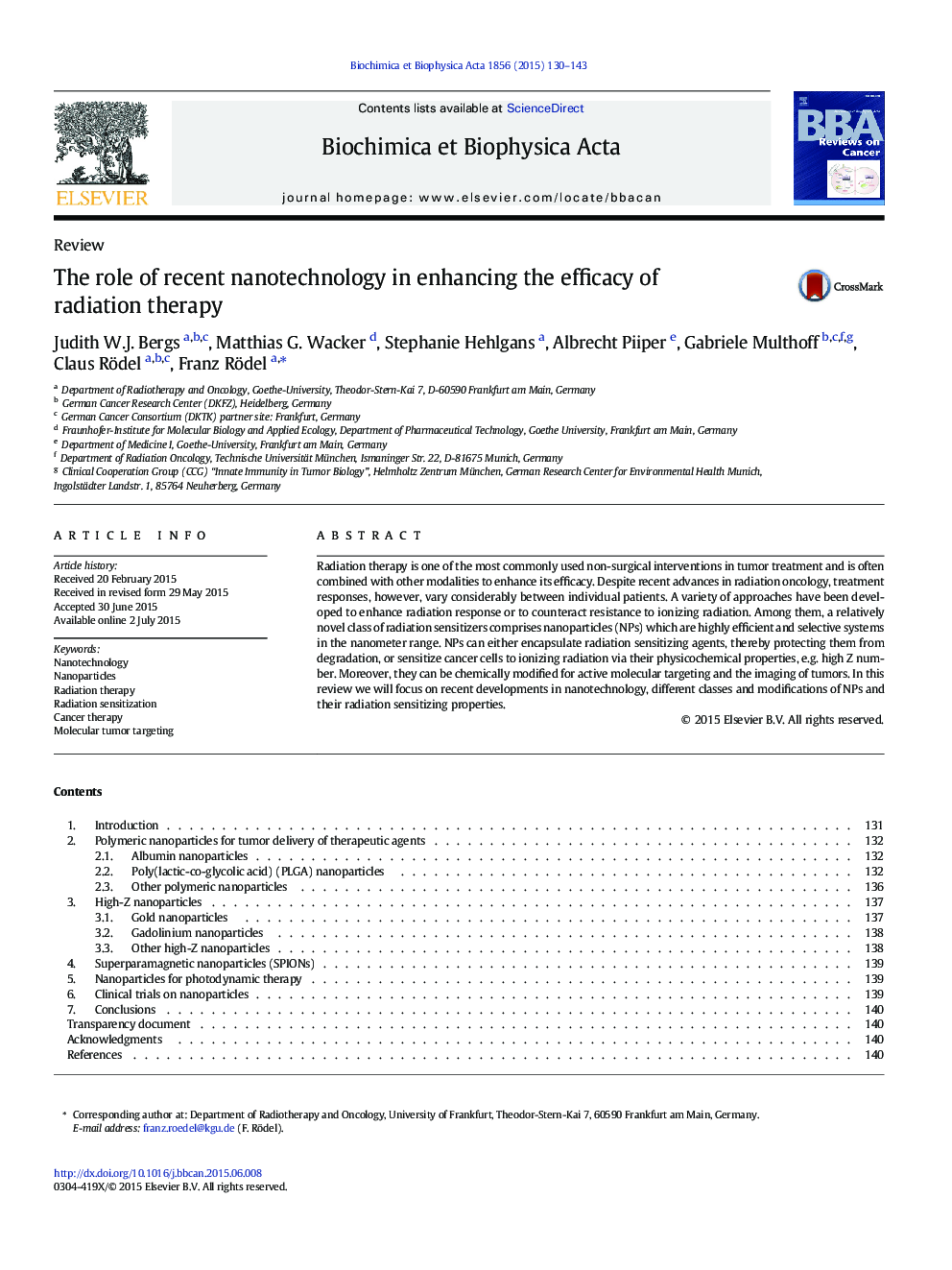| Article ID | Journal | Published Year | Pages | File Type |
|---|---|---|---|---|
| 2100856 | Biochimica et Biophysica Acta (BBA) - Reviews on Cancer | 2015 | 14 Pages |
•Nanoparticles can sensitize tumors to radiation therapy.•Nanoparticle surface modifications can serve for active tumor targeting and imaging.•Treatment of cancer patients with nanoparticles is feasible and well tolerated.•Nanotechnology holds promise for future combined modality cancer treatment.
Radiation therapy is one of the most commonly used non-surgical interventions in tumor treatment and is often combined with other modalities to enhance its efficacy. Despite recent advances in radiation oncology, treatment responses, however, vary considerably between individual patients. A variety of approaches have been developed to enhance radiation response or to counteract resistance to ionizing radiation. Among them, a relatively novel class of radiation sensitizers comprises nanoparticles (NPs) which are highly efficient and selective systems in the nanometer range. NPs can either encapsulate radiation sensitizing agents, thereby protecting them from degradation, or sensitize cancer cells to ionizing radiation via their physicochemical properties, e.g. high Z number. Moreover, they can be chemically modified for active molecular targeting and the imaging of tumors. In this review we will focus on recent developments in nanotechnology, different classes and modifications of NPs and their radiation sensitizing properties.
